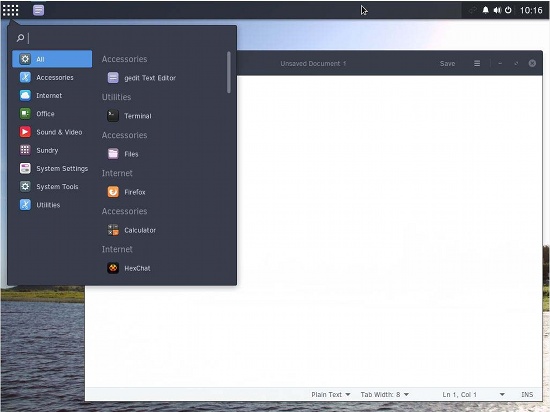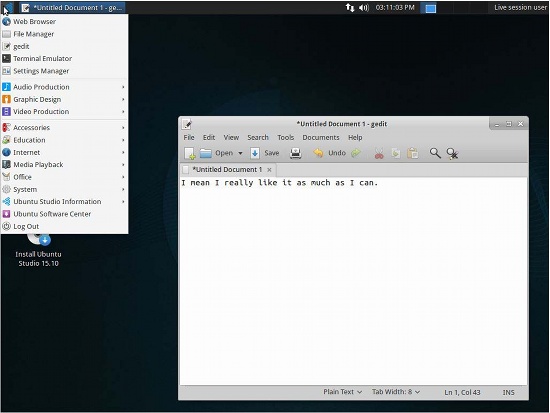Here Are The Best Linux Distros of 2016
Here are the top Linux distros of 2016
Linux was developed by Linus Torvalds at the University of Helsinki in Finland. It was inspired by Minix, a small Unix System and was introduced in October 1991.
The
first official version was Linux 0.02. In 2001, 2.4 version was
released. It is developed under GNU license, which allows the source
code of Linux to be distributed freely. Linux is used for networking,
software development and web hosting.
Ever since it was
introduced, Linux has beengaining rapid popularity among users.
However, choosing the right distro is very important given that there
are dozens of them which can fulfill your needs.Swapnil Bhartiya from Linux.com has prepared a exhaustive list of best Linux distros for 2016 which you can choose according to your needs.
Here are the best Linux distros of 2016
Best Comeback Distro: openSUSE
openSUSE
formerly SUSE Linux and SuSE Linux Professional, is a Linux-based
project and distribution sponsored by SUSE Linux GmbH and other
companies. It is widely used throughout the world, particularly in
Germany. The focus of its development is creating usable open-source
tools for software developers and system administrators, while providing
a user-friendly desktop, and feature-rich server environment.
The company actually predates Linux king Red Hat. SUSE is also the sponsor of the community-based distro openSUSE.
In
2015, openSUSE teams decided to come closer to SUSE Linux Enterprise
(SLE) so that users could have a distribution that shares its DNA with
the enterprise server — similar to CentOS and Ubuntu. Thus, openSUSE
became openSUSE Leap, a distribution that’s directly based on SLE SP (service pack) 1.
Furthermore, openSUSE also announced the release of Tumbleweed,
a pure rolling-release version. So, now, users can use either the
super-stable openSUSE Leap or the always up-to-date openSUSE Tumbleweed.
Most Customizable Distro: Arch Linux
Arch Linux is a Linux distribution for computers based on IA-32 and x86-64 architectures. The design approach of the development team follows the KISS principle (“keep it simple, stupid”) as the general guideline, and focuses on elegance, code correctness, minimalism and simplicity, and expects the user to be willing to make some effort to understand the system’s operation. A package manager written specifically for Arch Linux, pacman, is used to install, remove and update software packages.
Arch Linux is the best rolling-release distribution for the following reasons.
- Arch Linux is a great distro for those who want to learn everything about Linux. Because you have to install everything manually, you learn all the bits and pieces of a Linux-based operating system.
- Arch is the most customizable distribution. There is no “Arch” flavor of any DE. All you get is a foundation and you can build whatever distro want, on top of it. For good or for worse, unlike openSUSE or Ubuntu there is no extra patching or integration. You get what upstream developers created. Period.
- Arch Linux is also one of the best rolling releases. It’s always updated. Users always run the latest packages, and they can also run pre-released software through unstable repositories.
- Arch is also known for having excellent documentation. Arch Wiki is best go-to resource for everything Linux related.
- Arch offers almost every package and software that’s available for “any” Linux distribution, thanks to the Arch User Repository, aka AUR.
Best-Looking Distro: elementary OS
Elementary
OS is a Linux distribution based on Ubuntu. It is the vehicle to
introduce the Pantheon desktop environment, similar to how Linux Mint
was the vehicle to introduce the Cinnamon desktop environment before
Cinnamon was available in other Linux distributions.
elementary OS
is quite strict about the holistic look and feel. The developers have
created their own components, including the desktop environment.
Additionally, they choose only those applications that fit into the
design paradigm. One can find heavy influence of Mac OS X on elementary
OS.
Best Newcomer: Solus
Solus is
a decent-looking operating system that has been created from scratch.
It’s not a derivative of Debian or Ubuntu. It comes with the Budgie
desktop environment, which was built from scratch but aims to integrate
with Gnome. Solus has the same minimalistic approach as Google’s Chrome
OS.

Best Cloud OS: Chrome OS
Chrome OS is
a browser-based operating system for online activities. However,
because it’s based on Linux and its source code is available for anyone
to compile.
Best Laptop OS: Ubuntu MATE
Ubuntu MATE is a free and open source Linux distribution and an official derivative of Ubuntu. Its main differentiation from Ubuntu is that it uses the MATE desktop environment as its default user interface, based on GNOME 2 which was used for Ubuntu versions prior to 11.04, instead of the Unity graphical shell that is the default user interface for the Ubuntu desktop.Ubuntu MATE to be an excellent operating system if you are a Ubuntu lover.
Best Distro for Old Hardware: Lubuntu
If you have an old laptop or PC sitting around, breathe new life into it with Lubuntu.
Lubuntu uses LXDE, but the project has merged with Razor Qt to create
LXQt. Although the latest release 15.04 is still using LXDE, the future
versions will be using LXQt. Lubuntu is a decent operating system for
old hardware.
Best Distro for IoT: Snappy Ubuntu Core
Now a days Internet of Things (IoT) is everywhere and Snappy Ubuntu Core
is the best Linux-based operating system for IoT connected devices. The
operating system holds great potential to turn almost everything around
us into smart devices — such as routers, coffeemakers, drones, etc.
What makes it even more interesting is the way the software manages
updates and offers containerization for added security.
Best Distro for Desktops: Linux Mint Cinnamon
Linux Mint Cinnamon
is the best operating system for desktops and powerful laptops. I will
go as far as calling it the Mac OS X of the Linux world. Honestly, I had
not been a huge fan of Linux Mint for a long time because of unstable
Cinnamon. But, as soon as the developers chose to use LTS as the base,
the distro has become incredibly stable. Because the developers don’t
have to spend much time worrying about keeping up with Ubuntu, they are
now investing all of their time in making Cinnamon better.
Best Distro for Games: Steam OS
Gaming
has been a weakness of desktop Linux. Many users dual-boot with Windows
just to be able to play games. Valve Software, the games distributor is
trying to bring as many games as possible on Linux. And, Valve has now
created their open operating system — Steam OS — to create a Linux-based gaming platform.
Best Distro for Privacy: Tails
In
this age of mass surveillance and tracking by marketers (anonymous
tracking for targeted content is acceptable), privacy has become a major
issue. If you are someone who needs to keep the government and
marketing agencies out of your business, you need an operating system
that’s created — from the ground up — with privacy in mind.
And, nothing beats Tails
for this purpose. It’s a Debian-based distribution that offers privacy
and anonymity by design. Tails is so good that, according to reports,
the NSA considers it a major threat to their hacking activities.
Best Distro for Multimedia Production: Ubuntu Studio
Ubuntu
Studio is an officially recognized derivative of the Ubuntu Linux
distribution, which is explicitly geared to general multimedia
production. It should use a lightweight desktop environment so that
precious system resources — such as CPU and RAM — are used sparingly by
the system itself, leaving them for the multimedia applications. And,
the best Linux distribution for multimedia production is Ubuntu Studio. It uses Xfce and comes with a broad range of audio, video, and image editing applications.

Best Enterprise Distro: SLE/RHEL
Enterprise
customers don’t look for articles like these to choose a distribution
to run on their servers. They already know where to go: It’s either Red Hat Enterprise Linux or SUSE Linux Enterprise.
These two names have become synonymous with enterprise servers. These
companies are also pushing boundaries by innovating in this changing
landscape where everything is containerized and becoming software
defined.
Best Server OS: Debian/CentOS
If
you are looking at running a server, but you can’t afford or don’t want
to pay a subscription fee for RHEL or SLE, then there is nothing better
than Debian or CentOS.
These distributions are the gold standard when it comes to
community-based servers. And, they are supported for a very long time,
so you won’t have to worry about upgrading your system so often.
Best Mobile OS: Plasma Mobile
Although the Linux-based distribution Android is ruling the roost, KDE’s Plasma Mobile is one the best alternative for a mobile operating system. This Kubuntu-based distribution was launched in 2015.
Best Distro for ARM Devices: Arch Linux ARM
Arch
Linux ARM is a port of Arch Linux for ARM processors. Its design
philosophy is “simplicity and full control to the end user,” and like
its parent operating system Arch Linux, aims to be very Unix-like. This
goal of minimalism and complete user control, however, can make Arch
Linux difficult for Linux beginners as it requires more knowledge of and
responsibility for the operating system.
Arch Linux ARM is
a purely community-based distribution that’s based on Arch Linux. You
can run it on Raspberry Pi, Chromebooks, Android devices, Nvidia Shield,
and what not. What makes this distribution even more interesting is
that, thanks to the Arch User Repository (AUR), you can install many
applications than you may not get on other distributions.
These
are the best distros which we could figure out. If you find any distro
that is not mentioned here but, you think is a better alternative,
kindly mention the same in the comments.
No comments:
Post a Comment